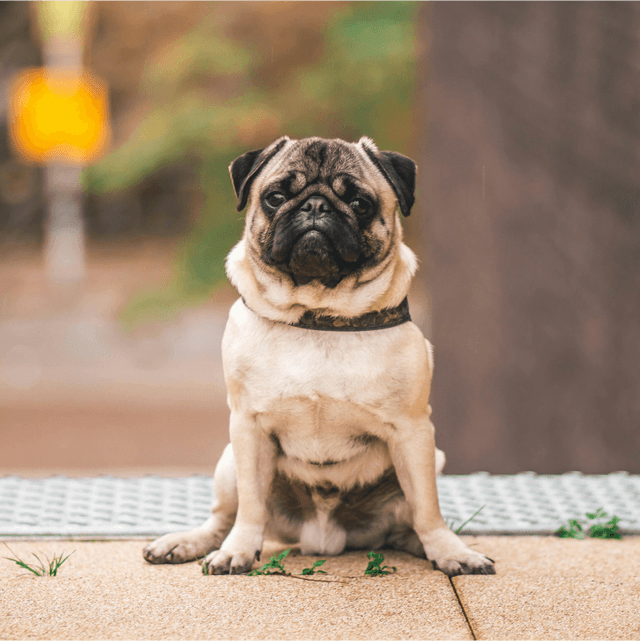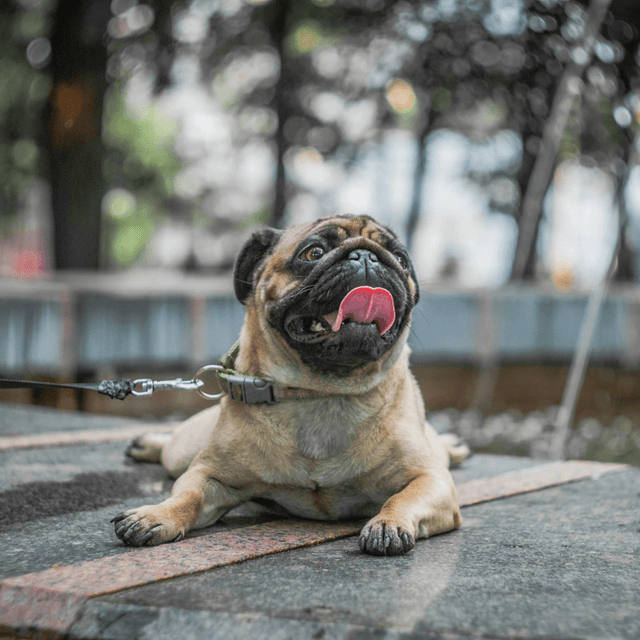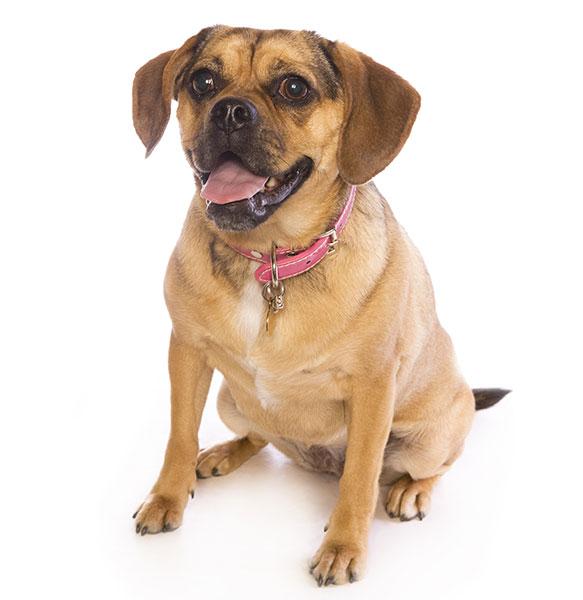Call us between 8AM-Midnight, every day!
pugs
Breed Overview
Browse All pug PuppiesQuick facts
Pugs are charming, cheerful, and great with kids.
Available pug Puppies
Personality & Training
Low
High
- Kids
- Cats
- Other Dogs
- Apartments
- Large Living Spaces
- Seniors
- First Time Pet Owners
What pug Owners Say About Their pugs
- We couldn't be happier with our new pug puppy! We named him Merlin and he is learning how to potty train and teach him little commands and it's going great. He loves walks and he is the cutest little guy ever. We will love him and protect him forever.
Physical Characteristics
Females: in
Males: in
Females: lbs
Males: lbs
Bathe as Needed, Wrinkle Care
Low
Explore Similar Breeds
About pugs
Pugs were originally bred as companion dogs. They are charming and cheerful and are perfect for families. They are eager to please and love being near their families. They aren't very active and do well in all-size living spaces.
pug Health
The Pug is a small and friendly breed with an average life expectancy of 12-15 years. Pugs are considered a brachycephalic breed which makes them more susceptible to a variety of health-related issues. Routine vet examinations are an important step in their care and contacting a veterinarian when observing any physical or behavioral changes that are of concern. Most vets will most likely recommend running basic health screenings to diagnose or even rule out potential health risks associated with the Pug.
Health Concerns
• Elbow Dysplasia
• Patellar Luxation
• Hip Dysplasia
• Legg-Calve-Perthes
• Pug Dog Encephalitis (PDE)
• Necrotizing Meningoencephalitis
• Pyruvate Kinase Deficiency
Minor Health Concerns
• Allergies
• Corneal Ulcer
• Ear Infection
• Brachycephalic Airway Syndrome
• Hypoglycemia (puppy)
Suggested Screenings
• Eye Exam
• Hip & Elbow X-rays
• Knee Exam
• Spine Evaluation
• Cardiac Exam
• Blood Test
• Pyruvate Kinase Deficiency (Optional)
• Serum Bile Acid Test (Optional)
• Tracheal Hypoplasia (Optional)
Routine Care
• Weight management
• Neuter or Spay
• Controlled exercise
• Regular Dental Exams
pug Care
Pugs are notoriously known for being heavy year-round shedders especially one that is double-coated. Routine brushing will prevent fur from collecting on your clothes and other surfaces.
While everyone adores a wrinkly Pug-mug, it is important to keep these areas clean of excess moisture or debris. Cleaning their wrinkles with a cotton pad or baby wipes at least once a day will prevent irritation or even a possible skin infection.
Pugs are companion dogs that don't like being left alone for several hours by themselves. While they are an intelligent breed, their personality quirks of being stubborn or easily distracted can make training a challenge for a first-time dog owner.














